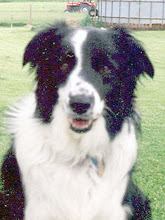For me, it's a new thing.
It all started when I read this article by the Ohio State University Sheep Team. In it, the OSU professors discussed the poor-quality hay crop. A wet spring and early summer meant cutting was delayed a month for many farmers. The resulting hay is past maturity, not that digestible and not that high in calories.
The hay in their example provided so few calories that a non-pregnant ewe would have to eat 9 lbs. of it to meet her daily calorie requirement. A ewe can't eat that much in a day. It's a like a human trying to get their daily calorie intake by eating only celery.
We celebrated finally getting hay in the barn.
While I'm an optimist, I'm also a realist. If I can't get second-cutting (more calorie dense) hay, what's my Plan B? First, I had to find out how much protein and calories my hay has. (On the good news front, it's very pretty and smells fresh. The Haflinger ponies gobble it down).
For the first time ever, I sent hay samples to a laboratory for testing.
Okay, for me, that sounded like a scary, complicated process. It's not. I took samples from three bales, put them in plastic bags and took them to the post office.
It's a rural post office. Maybe they ship lots of forage, soil and other crop samples.
Five days after shipping the samples, my test results arrived in my inbox. I had 3 pages of numbers, percentages and abbreviations--and no idea how to interpret them.
Luckily, the local OSU extension agent did.
The verdict: while the hay's not great, it'll keep the ponies and dry (non-pregnant) ewes well-fed through winter. In late pregnancy, the pregnant ewes are going to need another source of calories (something more dense). I can either supplement with better quality hay or grain. I can also consider changing my breeding dates to take full advantage of green grass.
But I can at least develop a plan--and know it'll probably change.


















